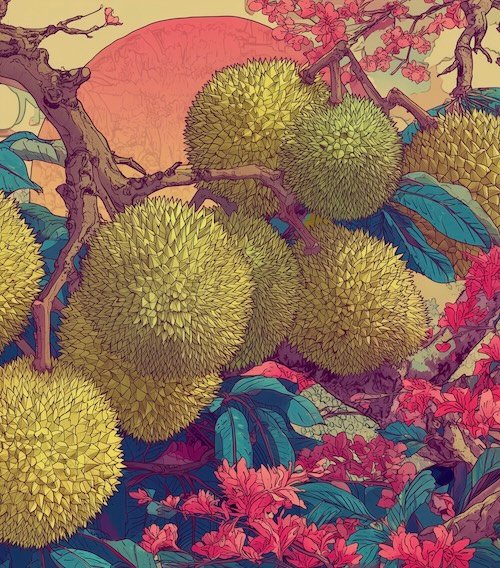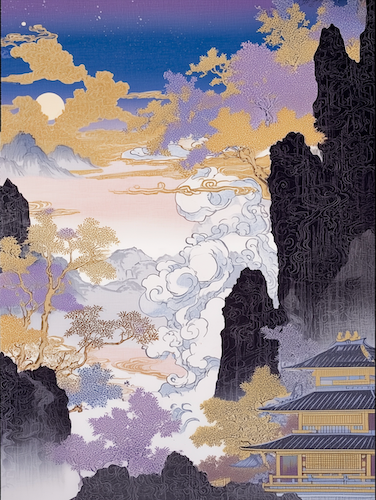-
Fagong 发功: Significance and Historical Evidence
Fagong 发功, the skill of emitting qi, is a diverse topic as it actually has quite a long history in China, there are many types of qi emission, and there are various reasons why this skill might be something to pursue. Historical Evidence of Qi Emission Qi emission, or faqi 发气, can be a controversial subject and, for the most part, in China has been taboo to demonstrate or speak of too publicly since well before the internet was around. So although it is something that exists among neigong adepts in China, you won’t find demonstrations or much about it on Chinese internet or social media. Interestingly, records of qi…
-
Durian: King of Fruit 水果之王
Durian is a fruit with a powerfully pungent yet sweet and tropical taste. People either love it or hate it. Yet, it’s known in China as the King of Fruits 水果之王. I became interested in it after hearing rumors that Master Jiang Feng had commented on it being good for neigong practitioners because it was an excellent dietary source of jing and qi. After developing a taste for it, it has now become my favorite fruit and something that I always seek out when in SouthEast Asia or China. Durian is also called the King of Yang Qi 阳气之王 for its ability to boost Yang Qi in the body. Its…
-
Five Types of Daoist Immortals
How you cultivate determines your results. Everyone dies, but not everyone dies the same way. There are five levels of Daoist Immortality and it’s important for a practitioner to understand what they are and what type of practices correspond to each so that they can properly align their practice with their goals. This remains relevant because it speaks to the importance of proper practice, the difference between qigong practice and neidan, and distinguishes practices that can lead to spiritual development from those that can at best lead to health and longevity. Throughout history many famous Daoist masters categorized levels of attainment, related them to certain modes of practice, and criticized…
-
Bioelectricity and the Modern Understanding of the Body’s Natural “Energetic” Intelligence
Classical Chinese views of health and the human body focus on the flows of qi 气 throughout the body’s meridians and between organ systems. Daoists had various “symbolic visions” of the body which could sometimes exist simultaneously and overlap. For example, one could metaphorically view the body as a microcosmic landscape, or in another, as “an administrative system that parallels the bureaucratic systems of the state and of the heavens.”1 Today, it is common to think of the qi that constitutes and animates the “body universe” as a sort of “energy.” Qi can not be fully reduced to bio-electromagnetism, but I think there is little doubt that the latter accounts…
-
Professor Ni Haixia’s Wall-knocking Exercise to Remove Blood Stasis
This wall-knocking practice (zhuang qiang gong 撞墙功) taught by the famous professor of Chinese medicine Ni Haixia 倪海夏 is great for clearing up stagnation of qi and blood, eliminating turbid qi, improving cardiovascular health, and it also makes a great addition to your qigong warm-up routine. Eliminating stagnation early is important because it eventually leads to blockages if left unchecked. One indicator of blood stasis is darkened and/or enlarged sublingual veins under the tongue. So many yangsheng enthusiasts, following Ni Haixia’s teachings, practiced this exercise daily for a while and then posted before and after pics online showing improvements in the appearance of their sublingual veins. The following are instructions…
-
Bai Jiguan – The Daoist Wuyi Cliff Tea
My favorite type of teas to drink in the colder parts of the year are Wuyi Rock (Cliff) Oolongs (we are talking true tea here, i.e. the camellia sinensis plant, not herbal teas). From the Wuyi Mountain area of Fujian, China, these are legendary oolongs known for their rich, smooth roasted flavors that come about due to the charcoal roasting process that they go through. The tea gardens are nestled amongst the cliffs of the Wuyi mountains, hence the name. The soil that the tea plants grow in is pristine and rich in minerals. The cha qi 茶气 (energetic property of the tea) of Wuyi Rock teas is easily experienced…
-
Five Black Tea 五黑茶 for the Greater Cold 大寒 Solar Term
As we approach “Greater Cold” (Da Han 大寒), the 24th and final solar term of the year, an arctic front and snow storm passed through the area that I live in, bringing the coldest temperatures that we’ve had this winter so far. It truly is “Greater Cold!” A good herbal tea for this time of year is called Wu Hei Cha 五黑茶, meaning “Five Black Tea.” This tea is also great in general for neigong practitioners. Winter is associated with the kidney organ system, the water phase, and the color black. The kidneys are our storehouse of the all-important jing 精 (essence), which fuels our neigong practice and is important for…
-
Why Dynamic Sets Are an Important Part of Foundational Training
Summary: Dong Gong 动功 (Dynamic Training Practice Sets, such as Yijinjing 12 Postures, Baduanjin, and other Daoyin) are commonplace in neigong training systems and often focus on developing and clearing/unblocking the 12 ordinary meridians associated with the internal organs. What are the benefits of this mode of practice? With many neigong systems highly focused on building the lower dantian in early stages, people often wonder if focusing on other areas will hold them back. Perhaps the main reason that these types of practices are widely taught early on as a part of initial foundational training is due to the age-old Chinese theoretical approach which says that before you build (qi) ,…
-
Pai da 拍打 (pat) the Heart and Lung Meridians in Winter
Pai da 拍打, which we could translate as “patting”, “slapping”, or “tapping,” when done along the body’s meridians, is a widespread traditional Chinese health modality. It is commonly done before and/or after practice (qigong, neigong, etc), but it is also very beneficial as a daily, stand-alone practice. Pai da is performed along the meridians (and acupoints) to keep the meridians unobstructed and the qi and blood flow vigorous. By smoothing the flow of qi and stamping out the turbid qi (zhuo qi 濁气) the functions of the internal organs are regulated and the body’s immunity is enhanced. Here we will focus on patting the meridians of the arm which is…
-
Winter Solstice is an Optimal Time for Stillness
“The winter solstice marks the beginning of the return of Yang; a thunderclap shakes the sky” Dongzhi yi yang lai fu shi, pili yisheng zhendong tian. 冬至一阳来复始,霹雳一声震动天。 ~ Zhang Sanfeng’s Meditation Song 三丰打坐歌说 The winter solstice (dong zhi 冬至) marks a special point in the year: The days will start to get longer again, the sun will start to get stronger. Yin Qi has peaked and will now start to decline. Yang Qi will begin to emerge and grow. Neigong and neidan practice are concerned with accumulating Yang Qi in the body. This is considered an excellent time to practice stillness-based practices such as meditation (both specifically on the winter…









